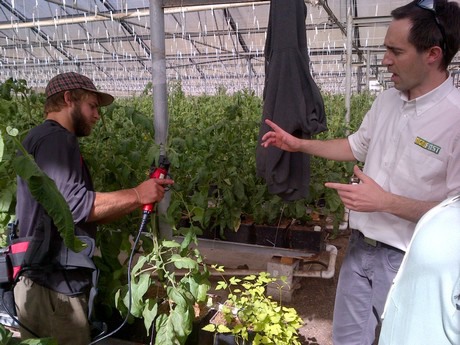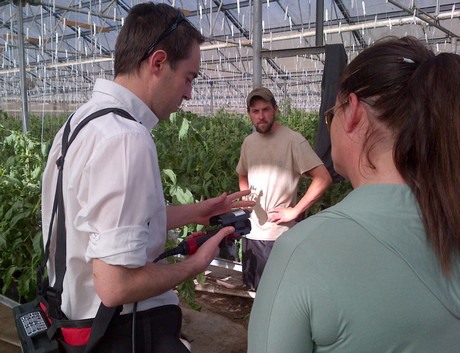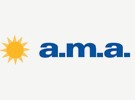
A.M.A. Plastics is working closely with TOM System developer, Agrifast, to introduce the Tom System in North America. For the last year, they have been conducting trials and now the system is beginning to take on a role as the primary or secondary clip method in commercial operations and those growers are experiencing great results with it.

A.M.A. Hydroponics Manager, Shawn Mallen, says “The main advantage of the TOM System is labour cost reduction due to the much higher clip application speed. In addition the soft metal clips can be run through a shredder with the crop and degrade over time. When used with degradable twine such as jute, or our Lankhorst Bio Twine, the crop is easily composted.” Some growers have commented on how easy it is to train new employees in its use and get them up to speed very quickly, with little to no damage to plants. “One of our customers has said that the system does less damage to his cucumber crop than twisting does, and is much faster” said Mallen.
It is easy to learn to work with the machine. In tomato cultivation, the TOM System is now being used in the Netherlands on 60 hectares. In addition, the system is now being used on bell peppers on 8 hectares. More recently a 5 hectare high wire cucumber grower started with the system. In North America, the TOM System is being used for tomato, cucumber and eggplant crops. A.M.A. is in trials right now for peppers, in Ontario.

One of the users of the TOM System is Viridis Aquaponics Inc. in California. The commercial aquaponic facility produces organically grown lettuce, tomatoes and cucumbers for several clients in California. Not so long ago, it took eight employees almost the entire week to clip all the 20,000 tomatoes and 20,000 cucumbers in the greenhouse. Now, because of the TOM system, it takes only one person to do all this work. “When I first saw the system, it was love at first sight,” tells Jennifer Bozicevich, production manager at Viridis. “I immediately enquired about the system from A.M.A. Plastics and in only a few weeks Agrifast came by to do a demonstration of the system in our greenhouse. I wanted to buy two of their TOM Systems, but they ensured me that I only needed one. And they were right. In the old situation eight people were working 25 hours a week on clipping, and now, with only one system, one person can do the work in the same 25 hours.”
Despite the fact that all produce at Viridis are grown with aquaponic water, it can be compared to a regular commercial vegetable greenhouse in terms of labour and production. “We have a poly greenhouse on a ten acre facility in Watsonville,” says Jennifer. “We are currently operating in only six acres, but the last two acres are going into production as we speak. Our crops are grown on coco peat substrate, but they’re all fed with aquaponic water. So we are growing fish and produce, just not together. The best way to describe it is integrated aquaponics.”

Viridis is growing special heirloom cherries that need special treatment while clipping. “Before it took us ages to train our employees how to clip our special cherries. Due to the TOM System being very easy to use we can train faster and more effectively.”
The systems doesn’t only significantly cut the labour costs, according to Jennifer it’s also better and safer for the crop. Our cucumbers are especially delicate and we still have to be a little bit more careful with these crops. That hasn’t changed. “It’s not that I see less damage to the crop because of the system itself. It’s just that, now with the system, it requires only one person to go into the crop. Eight people can do more harm walking through the crop and clipping, than one. I really love the system and I can’t say enough good things about it.”
For more information on the TOM System in North America:
A.M.A. Plastics
Rick & Connie Bradt
T 519-322-1397
F 519-322-1358

ama@amaplas.com
www.amaplas.com
 For more information on the TOM System in general:
For more information on the TOM System in general:Agrifast
Alberto Lizarraga
alberto.lizarraga@agrifast.es
thetomsystem.com
